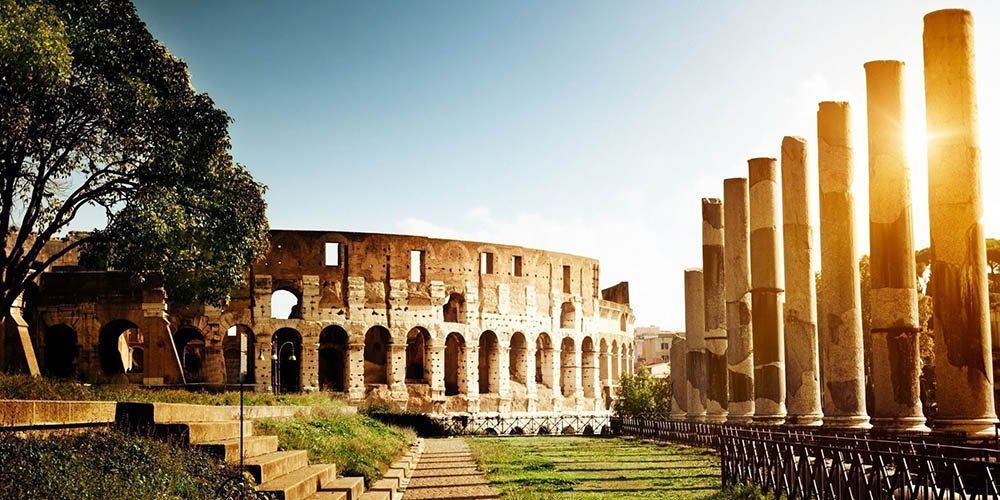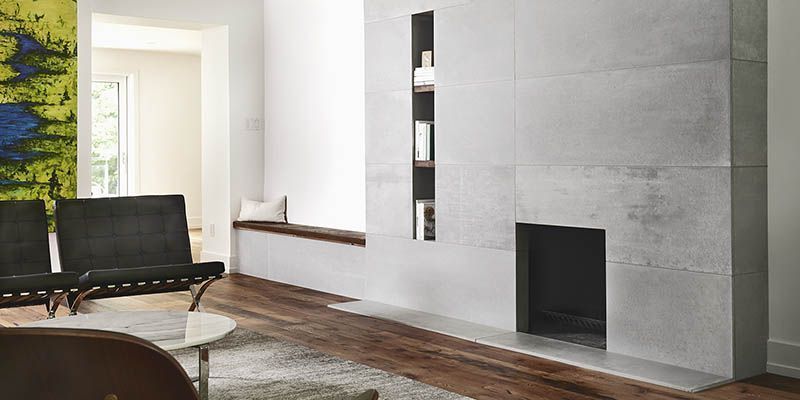10 Surprising Facts About Concrete You Never Heard About Before

It’s hard to imagine modern life without concrete. Thanks to its incredible strength and versatility, this man-made material is used to build everything from superhighways to kitchen countertops.
But did you know that people have been using concrete since ancient times? By 700 BC, Bedouin traders had developed a concrete-like material which they used to build secret underground water cisterns that helped them survive in the desert.
Today, concrete is the world’s most-popular man-made building product. More than 7 billion cubic meters of concrete are produced each year. That’s one cubic meter for every person on the planet! And concrete is used by engineers and professional builders around the globe for an almost endless list of projects.
Want to know more? Read on to find out more interesting facts about concrete.
1. Reinforced concrete is the only building material that is highly resistant to both water and fire
Concrete is virtually fire-proof. It doesn’t burn, it can’t be set on fire, and it doesn’t release toxic fumes when it comes into contact with flames. And thanks to the slow rate of thermal conductivity of concrete – or heat transfer – concrete is an effective fire shield. That’s why buildings and other structures made from concrete are able to survive a fire when everything around goes up in flames.
Concrete is also naturally water resistant. The use of membranes and special concrete mixes can make it virtually waterproof, making concrete the ideal building material for underground structures like lower levels, basements, and parking structures.

2. Concrete is the best material for road construction
Did you know that almost 30 per cent of interstate highways in the United States are built using concrete? That’s because even though the initial cost to build may be slightly higher than asphalt, concrete roads last longer and require less maintenance – making it the most cost-effective and environmentally-friendly choice in the long run.
And since concrete mixes can be customized for specific uses and conditions, concrete is particularly well-suited for the Canadian climate.
3. The first concrete highway was built in 1909
The first concrete road was built in 1909 on Woodward Avenue between Six and Seven Mile Roads in Greenfield Township, which is now part of northwest Detroit. The mile-long road cost $13, 492.83 and was built by the Wayne County Road Commission, whose membership included Henry Ford.
Up until that point, non-dirt roads had been built using bricks or cobblestones, or a mix of tar and stones called macadam – all of which made for a bumpy ride!

4. Concrete was used as a building material in ancient Rome
Roman builders mixed lime, water and volcanic ash from Mount Vesuvius and called the concrete ‘pozzolana.’ In fact, the Roman civil engineer Vitruvius wrote about four types of pozzolana – black, grey, red, and white.
The Romans understood the waterproof qualities of this remarkable new building material, and used it to construct their port at Cosa. Although the port reached its height in 100 BC, three of its concrete piers survive as a testament to the engineering know-how of the ancient world.

5. The British Army used concrete to detect enemy aircraft
Before the development of radar in World War Two, the British erected parabolic acoustic mirrors – commonly called ‘listening ears’ – to detect incoming aircraft. A network of these enormous concrete sound reflectors was constructed along England’s coast during the early days of World War Two and can still be seen today.

6. Concrete and cement are not the same thing
Concrete is a mixture of 60 – 65% aggregates like sand, gravel, and crushed stone, 15 – 20% water, and only 10 – 15% cement. When mixed, the cement and water harden, binding the aggregates into the solid mass we call concrete. So, there is no such thing as a cement sidewalk!
7. Concrete is a popular material for high-end countertops, sinks, fireplaces and floors
The fact that concrete can withstand water with ease has made it a popular choice for garden décor and outdoor furniture. But concrete can be used to beautify the inside of the home, too. Concrete’s incredible versatility and durability makes it the perfect building material for custom countertops, sinks, and fireplaces.
And concrete floors can be a surprisingly economical way to give any indoor living space a sleek, contemporary look that’s low-maintenance and that will take a lifetime of wear and tear.

8. Reinforced concrete is the only building material used for underwater structures
Because cement is an aggregate, it’s possible to develop different mixes for specific uses. Pozzolanic cement – prepared by grinding pozzolanic clinker with Portland cement – is ideally suited for the construction of underwater structures like damns, piers, tunnels and sewer works. Not only is this special concrete versatile, it is highly water-resistant and outperforms steel or wood for underwater construction.

9. Concrete has an incredibly high compressive strength
Measured in pounds-per-square-inch (psi) compressive strength refers to the amount of force needed to break a material. The typical compressive strength for concrete ranges from 3000 to 7000 psi, but strengths of up to 20,000 psi are possible.
10. The world’s largest concrete structure is in China
At 185 metres high and 2,309 metres long, the Three Gorges Dam on China’s Yangtze River is the world’s largest concrete structure. Built between 1994 and 2006, the dam’s hydroelectric station can generate an incredible 22,500 MW of power. Its reservoir holds as much water as Lake Superior, and displaced around 1.3 million people.


